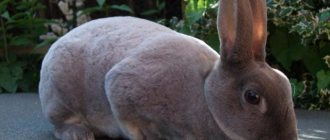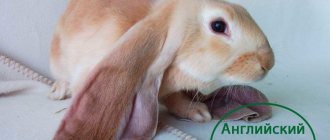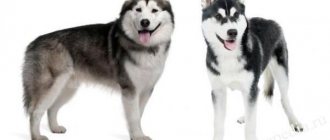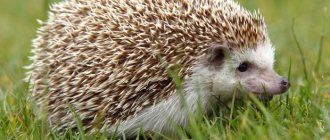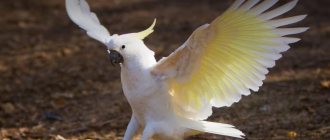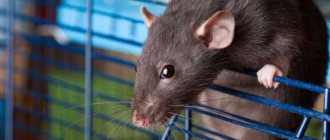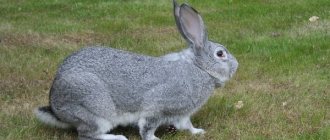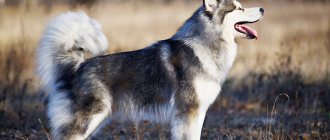- Wild animals
- >>
- Mammals
The Djungarian hamster is a small, very cute and active animal from the rodent family. They are very common as pets. Their popularity is explained by their simplicity and low maintenance requirements. However, before you bring such a small animal home, you need to ask how to properly create comfortable living conditions for it. In many literary sources, the dzhungarik is found under the name Sungur hamster.
Origin of the species and description
Photo: Djungarian hamster
Djungarian hamsters are chordates. They are classified into the class of mammals, the order of rodents, the family of hamsters, the genus of hairy-footed hamsters, and the species Djungarian hamster. The first scientific description of hamsters was compiled in 1839 by researcher Waterhouse. At that time, these representatives of the hamster family were present in single specimens only in the territory of modern Syria.
Almost a hundred years will pass until the first living hamster falls into the hands of scientists and researchers. The first person to catch the rodent was the scientist and researcher Aharoni from Jerusalem. He managed to find a female specimen in a deep hole along with 12 cubs.
Video: Djungarian hamster
After transporting the animals, only four were able to survive. Very soon, offspring appeared from these animals, which also began to multiply and produce offspring quite quickly. It was these individuals, discovered by the professor in a deep hole, that became the ancestors of all animals kept at home.
In 1938, the animals were brought from England to the United States. Here they were used as animals for laboratory research. Then they returned to Europe as laboratory animals. From this point on, the rapid and highly successful domestication of animals began. Within about a decade, hamsters have completely become pets in many countries around the world.
What you need to know before purchasing
It is advisable to learn everything about Djungarian hamsters before purchasing. The life expectancy and health of your pet will depend on your care. How you treat him is how he will treat you.
- Immediately upon being brought home, the hamster must be placed in ready-made housing. When moving, the animal is guaranteed to be stressed, since everything it knew has disappeared. Once in a new place, for some time you will be afraid to even stick your nose out. The only thing that saves him is a house where he can hide and get away from the stress. At this time, he should not be disturbed; let him get used to the new environment. Only when the pet comes out on its own and explores its new place of residence, can you try to make contact with it.
- It is advisable to accustom hamsters to handling while they are small. This will become more and more difficult to do with age. Once the rodent has recovered from the stress, you can slowly make contact. How to train a hamster to be handled, read here: taming a hamster. You can play with him every day so that he gets used to human hands.
- There should only be one hamster in one cage. Dzungarians are loners and will not tolerate strangers on their territory. For those who want to have several rodents and place them in one cage, the Roborovsky hamster is more suitable.
Appearance and features
Photo: What a Djungarian hamster looks like
Djungarian hamsters are very cute small animals that have a pointed muzzle and small, round ears. Sexual dimorphism is practically not expressed. One adult, regardless of gender, has a body length of 9-10 centimeters. The body weight of one adult individual is about 35-65 grams. The animal's muzzle is slightly elongated, pointed at the nose. Hamsters' eyes are round, black, and shiny. The nose area is framed by a rather long mustache.
Hamsters' fur is quite thick and can be colored in a variety of colors. The body of rodents is painted in two colors. The upper part of the body in the back area has a darker color. The paws and belly area are colored light, milky or beige. A characteristic feature is the presence of a dark stripe that runs along the line of the animal’s spine.
Possible color options for rodents:
- grey;
- brownish;
- gray with a lilac tint;
- ginger;
- cream.
Under natural conditions, hamsters shed twice a year. In winter, their coat is white with a silver tint, and in summer it turns gray for camouflage purposes. Hamsters have small, four-toed feet. They perform the function of hands. The fingers have long, sharp claws that help animals when digging holes. The animals' fingers are covered with thick fur. Djungarian hamsters have a thin, short tail.
Determination of gender
In the fourth week of life, the hamster begins puberty, and it is during this period that different-sex individuals are placed in different cages. How to determine the sex of a Djungarian hamster ? It is worth noting that the testes of males may not always be clearly visible at this age. Some males may suffer from cryptorchidism - that is, the testes do not descend into place at all, which means it is even more difficult to determine the sex of the rodent.
To determine sex, turn the hamster over on its back and look down its belly. In the female, the vaginal opening is very close to the anus; they are separated by a small patch of skin on which hair does not grow. In unformed females, you can notice weakly defined nipples, of which there should be eight. In addition, they do not have a bulge on their stomach, similar to a navel. This is a special gland with which males mark their territory.
Where does the Djungarian hamster live?
Photo: Djungarian hamster in Russia
The natural habitat of the dwarfs is quite wide. Djungarian hamsters are named after a province in the northwestern region of the People's Republic of China - Dzungaria.
Geographical regions of animal habitat:
- desert regions of Russia;
- Altai region;
- Kazakhstan;
- Mongolia;
- China;
- Korea.
The animals live in minks. The burrows are dug and arranged independently. Each burrow has from 3 to 6 entrances and exits. The structure of hamster burrows resembles real chambers, the depth of which is about one meter. The rodent has a pantry room where it prepares food supplies for the winter, a bedroom, and a latrine.
To keep an animal in artificial conditions, you will need a cage, which must be equipped with everything you need to keep a hamster comfortable. A wheel with a diameter of at least 16 centimeters must be placed in the cage. A wheel with a small diameter leads to spinal deformation. Another mandatory element is a house. It is better if it does not have large window openings to avoid an animal with cheeks full of food getting stuck in it.
It is necessary to put branches of fruit trees and shrubs in the cage, on which the hamster will sharpen his teeth. You need to designate a toilet for him in some corner. From time to time it is recommended to place a container in the cage into which sand can be poured for chinchillas. Djungarians will happily swim in the sand in this container. It is prohibited to place cotton wool, hay, or various scraps of fabric into the animals’ homes. Long fibers can crush the limb. In this case, it dies.
What does the Djungarian hamster eat?
Photo: White Djungarian hamster
Djungarians are undemanding when it comes to nutrition, so keeping and feeding them will not be too expensive. This type of pet can safely be called omnivores. The best option for these animals is ready-made balanced types of food specifically for hamsters. The basis of these feeds are granules and grains and cereals. Hamster formulas also include pieces of corn, as well as at least 10-15% proteins.
Be sure to give your hamsters fresh, juicy vegetables and fruits, which the animals love very much. However, it is necessary to promptly remove unused remains and cells in order to avoid rotting and disease of the animals, since animals often not only eat the food allocated to them, but also hide large quantities of them in their cheeks. This is how they stock up on provisions.
The owner must ensure constant access to water. To do this, you can install sippy cups. Another mandatory condition is the introduction into the diet of vitamins and minerals necessary for the normal functioning of hamsters. The animals also need to be fed with fresh herbs and juicy berries. Sometimes it is recommended to give them nuts and sunflower seeds. Hamster breeders should be careful about the source of protein in their hamsters' diet.
It is recommended to give them the following ingredients as protein food:
- boiled chicken liver in small quantities;
- boiled chicken breast;
- low-fat varieties of cottage cheese.
Your hamster should have fresh food every day. Changing the water in the sippy cup is also required daily. It is strictly forbidden to include foods that contain large amounts of sugar in your diet.
What does lifespan depend on?
The lifespan of a Djungarian hamster depends on various factors. The negative ones include:
- Place the cage in direct sunlight. The animal experiences severe stress from bright lighting, and overheating can lead to premature death.
- Frequent or constant noise.
- Swimming in the water.
- No load.
Favorable factors:
- Calm environment. The cage should be placed away from noise sources (TV, speakers), and access to the cage by other pets should be limited.
- Comfortable living conditions. Temperature range +21-25°C, humidity up to 60%. There should be no spoiled food in the cage. Hamsters tend to make supplies that quickly spoil.
- Physical exercise. A running wheel, labyrinths, and a tunnel must be installed in the cage.
- Taking a sand bath.
- Walking outside the cage. A special walking ball is suitable for these purposes.
Features of character and lifestyle
Photo: Djungarian hamster
Djungarian hamsters tend to lead a solitary, solitary lifestyle. Under natural conditions, they live separately, in burrows that they dig and inhabit on their own. Rodents tend to be nocturnal. During the day they sleep almost all the time, hiding in their shelter. The shelter is left at nightfall. This way of life allows you to hide from a large number of enemies in natural habitats.
At night, hamsters are very mobile and active. In search of food in natural conditions they can travel quite long distances. A distinctive feature of these representatives of rodents is their thriftiness. Animals tend to collect food with their paws, like hands, and push it behind their cheeks. So they bring it home and put it in their storerooms.
Interesting fact: The size of the cheek space in which animals store their reserves can exceed the size of their heads by three times. It is noteworthy that before the onset of cold weather, hamsters can make an amount of reserves that exceeds their own body weight by almost a hundred times!
It is at night that animals are engaged in searching and collecting food and arranging their burrows. They also tend to frolic, just run and play. That is why, when arranging a cage for keeping at home, it is very important to install a wheel, swings, etc.
Typically, each individual has its own habitat region, and the territories of different individuals do not overlap. In a situation where this does happen, individuals reclaim their territory from each other. Often such wars lead to the death of the weaker animal.
Social structure and reproduction
Photo: Djungarian hamster in nature
Djungarian hamsters are highly fertile. This is how nature intended it so that the animals would not hatch in their natural habitat. Hamsters reach sexual maturity at four weeks of age. If the animals are kept at home, they should be separated from each other as soon as they are one month old. Early pregnancy is very dangerous for the life and health of females.
The most optimal age for the first pregnancy is 3.5-4 months. After mating at home, individuals of different sexes are recommended to be separated so that they cannot harm each other. Pregnancy lasts on average 23-24 days. One female can give birth to from 1 to 10 cubs. Babies are born completely helpless and are in great need of maternal help and care. Sometimes it happens that the female abandons her offspring, or may even eat her cubs.
Interesting fact: A day after the birth of her offspring, the female is again ready to mate.
Hamsters get stronger and grow quite quickly. To get healthy offspring, it is recommended to choose healthy individuals with a known pedigree for mating. Only in this case is there a guarantee that the animal will not have any pathological diseases.
Unsociable friends
Djungarian hamsters have an independent character, so they are not very eager to communicate with their owners. In some cases, an agitated “fluffy” may even bite the hand that feeds him. To wean a pet from such a habit, it must be raised every day, taking it into your arms. But raising a pet once and for all will not work. If you don’t communicate with him for 7-10 days, he will become “wild” again, and you will have to start the educational process all over again.
To prevent your furry neighbor from biting, you should not take him out of the house during the daytime nap, you should not put him head down, or drive him into a corner.
Natural enemies of Djungarian hamsters
Photo: What a Djungarian hamster looks like
In their natural habitat, hamsters have a huge number of enemies who constantly hunt them. The nocturnal lifestyle and deep burrows save rodents from some of them.
Natural enemies of hamsters:
- predatory bird species - stoats, owls, hawks, falcons;
- ferrets;
- wild dogs;
- foxes;
- wolves;
- lynx;
- wild cats;
- martens.
Nature has endowed these representatives of the rodent family with excellent hearing, which allows them to detect the slightest rustle at a considerable distance. This ability allows you to determine the approach of an enemy in many situations. If a hamster hears dangerous sounds, it instantly flees. They most often hide in deep holes or other reliable shelters. If the sounds that instill fear are very close and there is no way to escape, the animal simply freezes, wanting to remain unnoticed. If this maneuver does not bring the desired result, the hamster rushes to attack.
In some cases, even large predators are confused by this behavior, giving the small animal a chance to escape. There are a number of diseases to which hamsters are very sensitive. Among the most common diseases that cause death in animals are diabetes and obesity.
Diseases of Djungarians
Representatives of this type of rodent sometimes get sick. The most common disease of the Djungarians is diabetes mellitus. The disease develops from poor nutrition, so it is necessary to carefully monitor your pet’s diet.
Wet litter and drafts can cause colds. In addition, “fluffies” can become infected with colds from their owners. To strengthen the immune system, it is advisable to give the animals fresh lettuce and parsley.
Typical diseases of the Dzungarians are intramural diseases. Moreover, if cataracts can appear closer to old age, then a young hamster can also get conjunctivitis, especially if its owner rarely cleans the cage.
An abundance of fatty foods increases the development of various tumors in rodents. The mechanism of their appearance has not yet been studied.
Sometimes furry animals suffer from skin diseases, which are accompanied by hair loss or dandruff. Skin ailments are caused by stressful situations in which a pet finds itself, or by individual intolerance to some substance.
An animal can be injured when falling from a height by sticking its paw between the bars of the cage. No pet is immune from dislocations and fractures.
Ticks and fleas cause parasitic diseases.
However, by following the principles of proper care and taking care of the cleanliness of your pet’s home, many diseases can be avoided. Caring owners will have a pet that looks cheerful and well-groomed. But if the animal’s behavior, the condition of its fur, or refusal to eat is evidence of a deviation from the norm, it is advisable to show the pet to a veterinarian.
